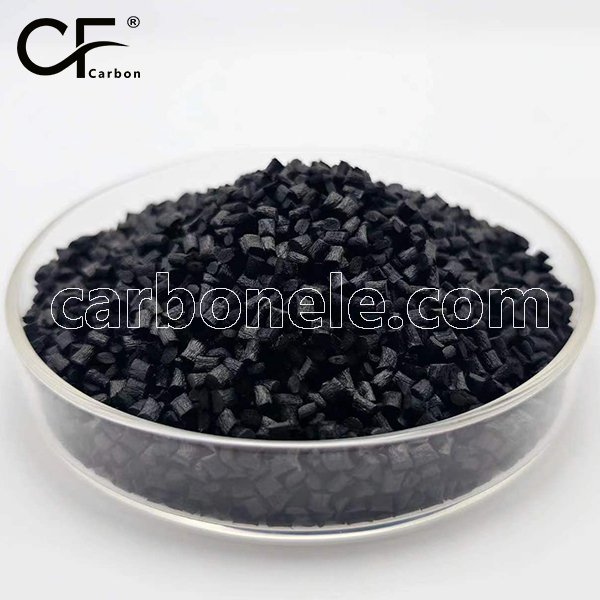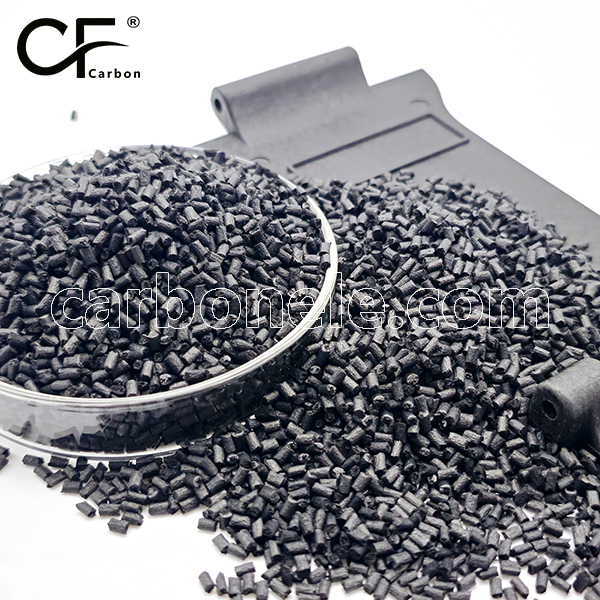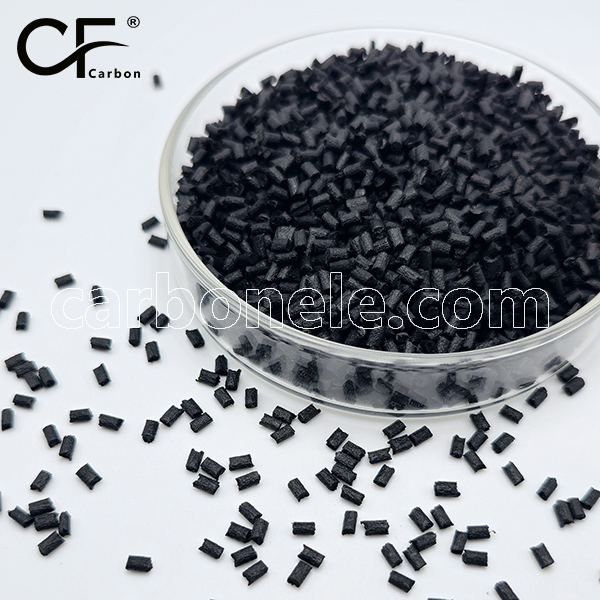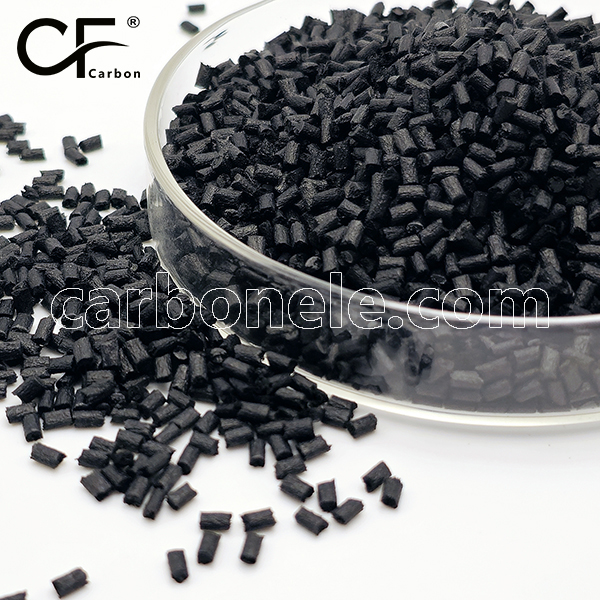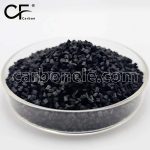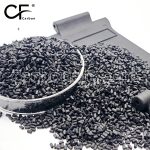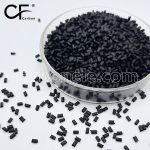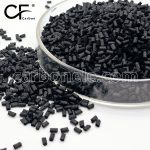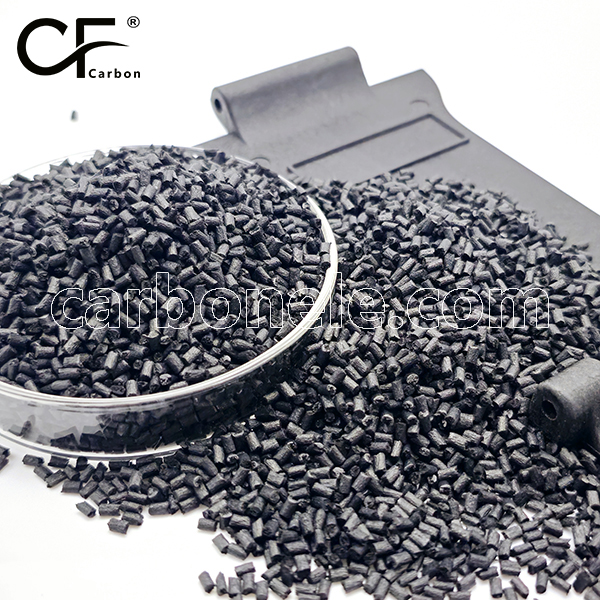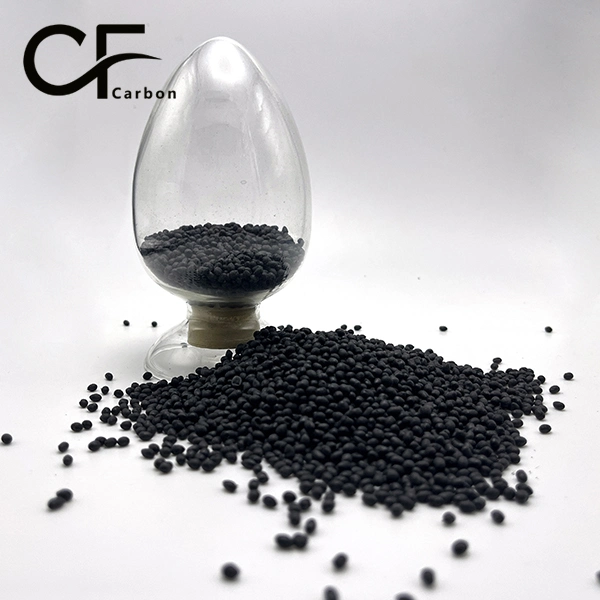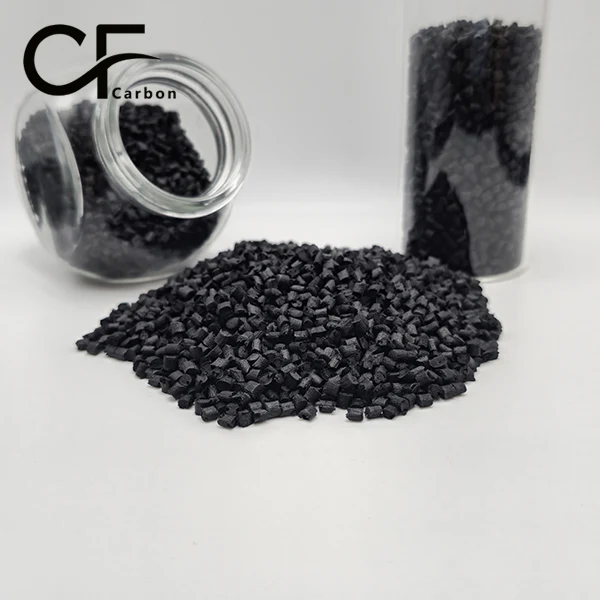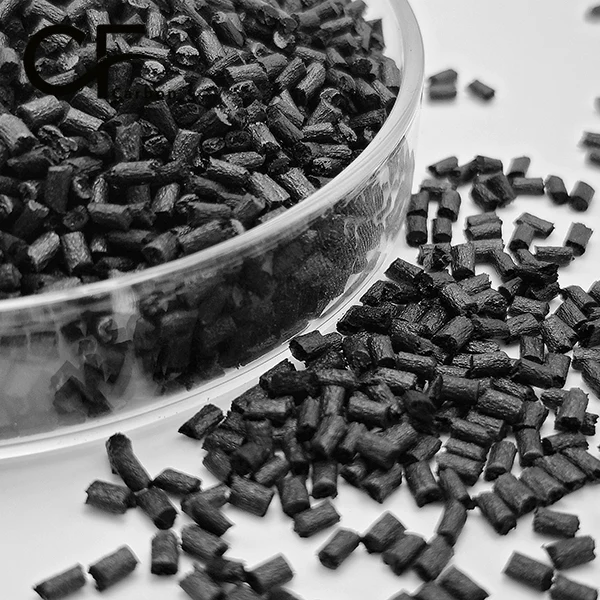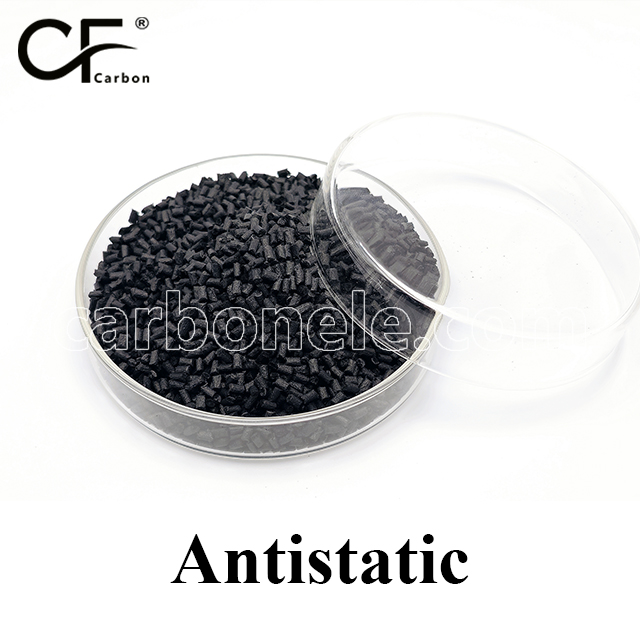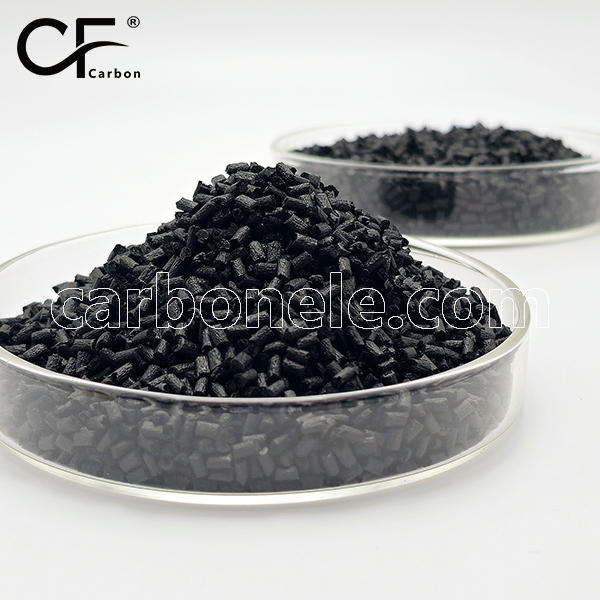
High Strength PA66 CF30 Thermoplastics for Robot Grippers
PA66 CF30 Thermoplastics Feature:
*High Tensile Strength: 230MPa tensile, 50% stronger than GF nylon.
*High Stiffness: 14GPa flexural modulus, minimal deflection.
*Heat Resistance: 255°C HDT, withstands motor heat.
*Low Moisture Absorption: <1.5% moisture absorption, stable in humidity.
*Lightweight: 1.38g/cm³, 40% lighter than aluminum.
- Manufacturer: Carbon New Material
- OEM/ODM: Acceptable
- Color: Black
- Free samples: ≤10kg
- MOQ: 100kg
- Port: Xiamen
- Model: PA66-CF-BCA3
- Fillers: SCF/LCF
Material Introduction
PA66 CF30 Thermoplastics are engineering-grade composites combining polyamide 66 (PA66) with 30% carbon fiber reinforcement. This advanced material delivers exceptional mechanical strength, thermal stability, and lightweight properties, making it ideal for high-performance robot grippers in industrial automation, logistics, and collaborative robotics. The carbon fiber enhancement addresses traditional polymer limitations while retaining injection-molding compatibility for complex geometries.
Why PA66 CF30 Thermoplastics Excels in Robot Gripper Applications?
1. Superior Strength-to-Weight Ratio
-
Tensile Strength: 210–230 MPa (ISO 527) – 50% stronger than glass-filled nylon, ensuring durability under repetitive gripping cycles.
-
Density: 1.38 g/cm³ – 40% lighter than aluminum, reducing robotic arm inertia and energy consumption.
2. Enhanced Stiffness & Dimensional Stability
-
Flexural Modulus: 12–14 GPa (ISO 178) – minimizes deflection during heavy payload handling (e.g., 10–20 kg).
-
Moisture Absorption: <1.5% (ISO 62) – outperforms unfilled PA66 (2.5%), critical for humid or washdown environments.
3. Thermal & Chemical Resistance
-
HDT (1.82 MPa): 255°C (ISO 75) – withstands heat from adjacent motors or friction.
-
Chemical Resistance: Resists oils, coolants, and UV degradation (ASTM D543), ensuring longevity in factories.
4. Fatigue & Wear Performance
-
Impact Strength: 80–100 kJ/m² (ISO 179) – absorbs shocks from accidental drops.
-
PV Limit: 3.0 MPa·m/s – reduces wear in sliding contact parts (e.g., adjustable gripper jaws).
5. Precision Moldability
-
Warpage: <0.2% – enables tight-tolerance gripper fingers (<0.1 mm gap).
-
Thin-Wall Capability: Moldable down to 1.5 mm – optimizes weight without sacrificing rigidity.
PA66 CF30 Thermoplastics are the optimal choice for robot grippers demanding lightweight robustness, thermal resilience, and precision. Its carbon fiber reinforcement provides unmatched strength for high-cycle applications, while its polymer matrix ensures cost-effective manufacturability. For grippers handling metal parts, automotive components, or medical devices, PA66 CF30 Thermoplastics outperforms metals and standard polymers, balancing performance with design flexibility.
Surface Resistivity Comparison
Conductors < 10⁵ Ω/sq. Antistatic Materials 10⁵ ~ 10¹² Ω/sq. Insulators > 10¹² Ω/sq. Static-Dissipative 10⁶ ~ 10¹¹ Ω/sq. *Key Influencing Factors Humidity: Increased moisture can reduce resistivity (e.g., in polymers). Temperature: Affects carrier mobility (↑ heat may lower semiconductor resistivity). Surface Contamination: Dust/oils alter readings significantly. Additives: Carbon black, metallic fillers can lower resistivity. *Applications Electronics: Antistatic materials (10⁶–10⁹ Ω/sq) prevent electrostatic discharge (ESD). Aerospace: Composites must control resistivity to avoid charge buildup. Medical Devices: Insulating materials (>10¹² Ω/sq) ensure patient safety. *Examples Polypropylene (PP): ~10¹⁶ Ω/sq (excellent insulator). Carbon Fiber Composites: 10³–10⁶ Ω/sq (static dissipation). ESD Flooring: 10⁶–10⁹ Ω/sq.
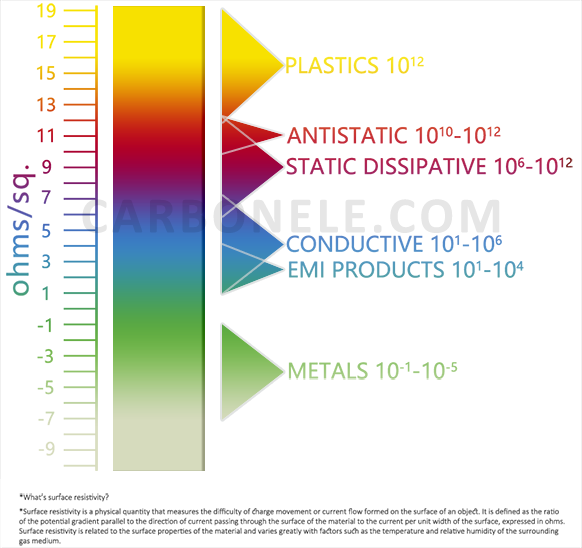
Get to Know Carbon Fibers
The table presents key performance data of carbon fiber grades. T300, with a tensile strength of 3530 MPa and a tensile modulus of 230 GPa, has a relatively low tensile elongation at break of 1.5% and a body density of 1.76 g/cm³. As the grade increases, for example, T700S shows an enhanced tensile strength of 4900 MPa compared to T300, while maintaining the same tensile modulus but with a higher elongation at break of 2.1%. T800S and T1000G both have a tensile modulus of 294 GPa, and their tensile strengths are 5880 MPa and 6370 MPa respectively. T1100G stands out with the highest tensile strength of 7000 MPa and a tensile modulus of 324 GPa. Generally, with the increase in product grade, the tensile strength and modulus tend to rise, while the density remains relatively stable around 1.8 g/cm³.
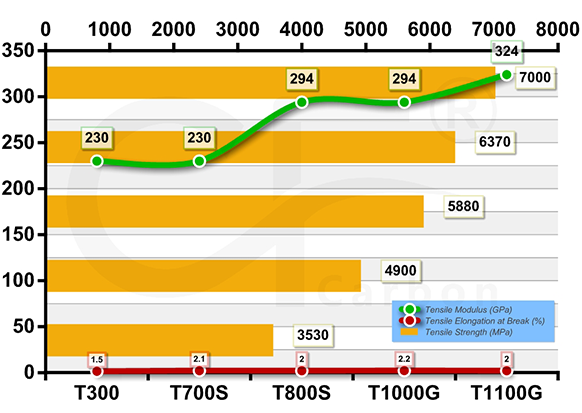
How to Buy?
If you want to obtain information such as product specifications, performance, and price, choose a suitable product according to your own needs. Meanwhile, you can ask the manufacturer to provide samples for testing to ensure that the material meets your usage requirements. If you are interested in purchasing this composite material, please contact the manufacturer Carbon (Xiamen) New Material directly.
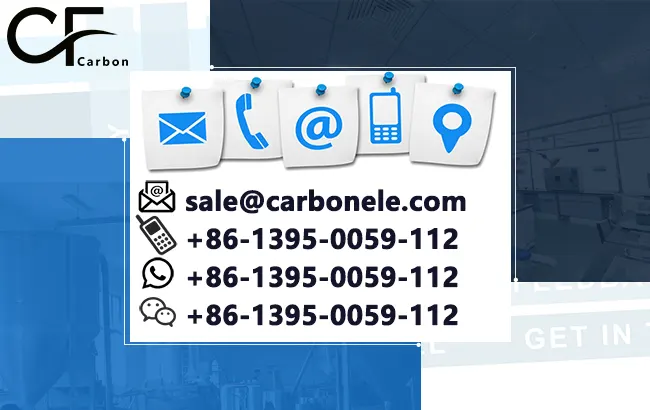
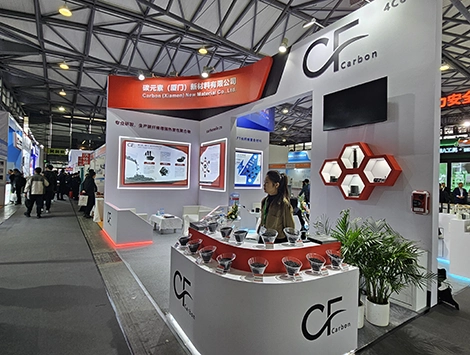

Frequently Asked Questions
Carbon (Xiamen) New Material Co., Ltd. aims to provide buyers with "one-stop" worry-free high-quality services. Here you can find all information about carbon fiber engineering plastics. If you still have questions, please send us an email for consultation!
-
How can I contact the manufacturer of a product that interests me?
When you find a product you are interested in, you can contact the manufacturer directly by sending an email and we will get back to you as soon as possible.
-
How do I find the products that interest me?
All you need to do is enter the keyword, product name in the search window and press the Enter key on your keyboard. Your search results page will then be displayed. You can also search within the product category pages on the home page. Each category is divided into subcategories, allowing you to refine your search and find products that interest you.
-
Where will I find a buying guide?
Please contact our after-sales service directly and we will provide you with a comprehensive operating guide.
-
What are CF Reinforced Thermoplastic Composites?
CF Reinforced Thermoplastic Composites are materials where carbon fibers are incorporated into a thermoplastic matrix. They combine the strength and stiffness of carbon fibers with the processability and recyclability of thermoplastics. For instance, they are used in automotive parts like bumper beams.
-
What are the benefits of CF Reinforced Thermoplastic Composites over traditional composites?
The key benefits include faster production cycles, easier recyclability, and better impact resistance. They also offer design flexibility. An example is in the manufacturing of consumer electronics casings where complex shapes can be achieved more easily.
-
How are CF Reinforced Thermoplastic Composites processed?
Common processing methods include injection molding, extrusion, and compression molding. Injection molding is widely used for mass production. For example, in the production of small components for the medical industry.
-
What industries use CF Reinforced Thermoplastic Composites?
They are utilized in aerospace, automotive, medical, and sports equipment industries. In aerospace, they can be found in interior components. In the medical field, they might be used in prosthetics.
-
How does the carbon fiber content affect the properties of the composites?
Higher carbon fiber content generally leads to increased strength and stiffness but may reduce ductility. A moderate content is often balanced for specific applications. For example, a higher content might be preferred in structural parts of a race car.
-
What are the challenges in using CF Reinforced Thermoplastic Composites?
Challenges include higher material costs, complex processing equipment requirements, and ensuring uniform fiber dispersion. Issues with adhesion between the fibers and the matrix can also arise. An example is in achieving consistent quality in large-scale production.







